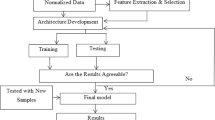Summary
Rh determinations with 6 anti-Rh-sera (anti-C(Cw), anti-Cw (pure), anti-D, anti-E, anti-c, anti-e) on 50000 individuals were studied. Excellent results were obtained using a modification of Hekker's papainenzym-method. The modification permits rapid determination on a glass slide of incomplete anti-Rh test sera in 5 fold dilution.
The results of Rh determinations in 2500 cases of disputed paternity are reported. In 15.8% of all cases paternity could be excluded on the basis of Rh-studies, including anti-Cw and anti-Ce sera.
Genotype determinations using anti-Ce-serum were carried out on individuals with phenotype CcDEe and their families.
The genotype RZr was found in 1.8% of these phenotypes.
Zusammenfassung
Verfasser teilt die Ergebnisse seiner Rh-Untersuchungen mit, durchgeführt an 5000 Personen mit 6 Anti-Rh-Seren [Anti-C(Cw), Anti-Cw (rein), Anti-D, Anti-E, Anti-c, Anti-e]. Sehr gute Erfahrungen sind zu verbuchen im Zusammenhange mit der Anwendung der Hekkerschen Papain-Enzym-Methode, welche durch Verfasser u. Mitarb. als Objektträger-(Tüpfelplatte)-Schnell-Methode modifiziert worden war, und welche es ermöglicht, daß inkomplette Anti-Rh-Testseren auch in einer 5fachen Verdünnung verwendet werden können.
Außerdem werden auch die Resultate von Rh-Untersuchungen in 2500 Rechtssachen berichtet. In 15,8% der Sachen gelang es mittels Rh-Untersuchungen (inbegriffen die Anwendung von Anti-Cw und Anti-Ce-Seren) einen Vaterschaftsausschluß zu erreichen.
Verfasser führte an 695 Personen mit Phänotyp CcDEe auch Genotypen-Bestimmung mittels Anti-Ce-Serum — ergänzt mit Familien-Untersuchungen — durch. Die Anwesenheit des Genotyp RZr wurde in 1,8% des Phänotyp gefunden.
Similar content being viewed by others
Literatur
Löw, B.: A practical method using papain and incomplete Rh-antibodies in routine Rh blood grouping. Vox Sang. (Basel)5, 94 (1955).
Hekker, A. C., Klomp-Magnée, W., Krijnen, H. W., van Loghem, J. J., jr.: A papain slid test for Rh mass typing. Vox Sang. (Basel)2, 128 (1957).
Horváth, E., Rex-Kiss, B., Simon, J.: Erfahrungen mit dem Papain-Objektträger-Test nach Hekker. Folia haemat. (Lpz.)85 4, 357 (1966).
Race, R. R., Mourant, A. E., Lawler, S. D., Sanger, R.: The Rh chromosome frequencies in England. Blood3, 689 (1948).
- Sanger, B.: Blood groups in man. II, ed., p. 114–115 and table 35. Oxford: Blackwell Sci. Publ. 1954.
Rex-Kiss, B., Szabó, L.: A genotipus meghatározása az Rh-rendszerben. Orv. Hetil.109, 3, 121 (1968).
— AB0-alcsoport és Rh-vércsoport vizsgálatok atyasági ügyekben. Jogtud. Közlöny13, 9, 327 (1958).
— Horváth, E.: Rh-tipus vizsgálatok és alkalmazásuk származásmegállapitási ügyekben. Haematol. Hung. (Ung.)6, 1–2, 213 (1966).
Author information
Authors and Affiliations
Rights and permissions
About this article
Cite this article
Rex-Kiss, B. Rh-Bestimmungen und ihre Anwendung zur Klärung strittiger Vaterschaft in Ungarn. Z Rechtsmed 67, 319–323 (1970). https://doi.org/10.1007/BF02054018
Received:
Issue Date:
DOI: https://doi.org/10.1007/BF02054018




